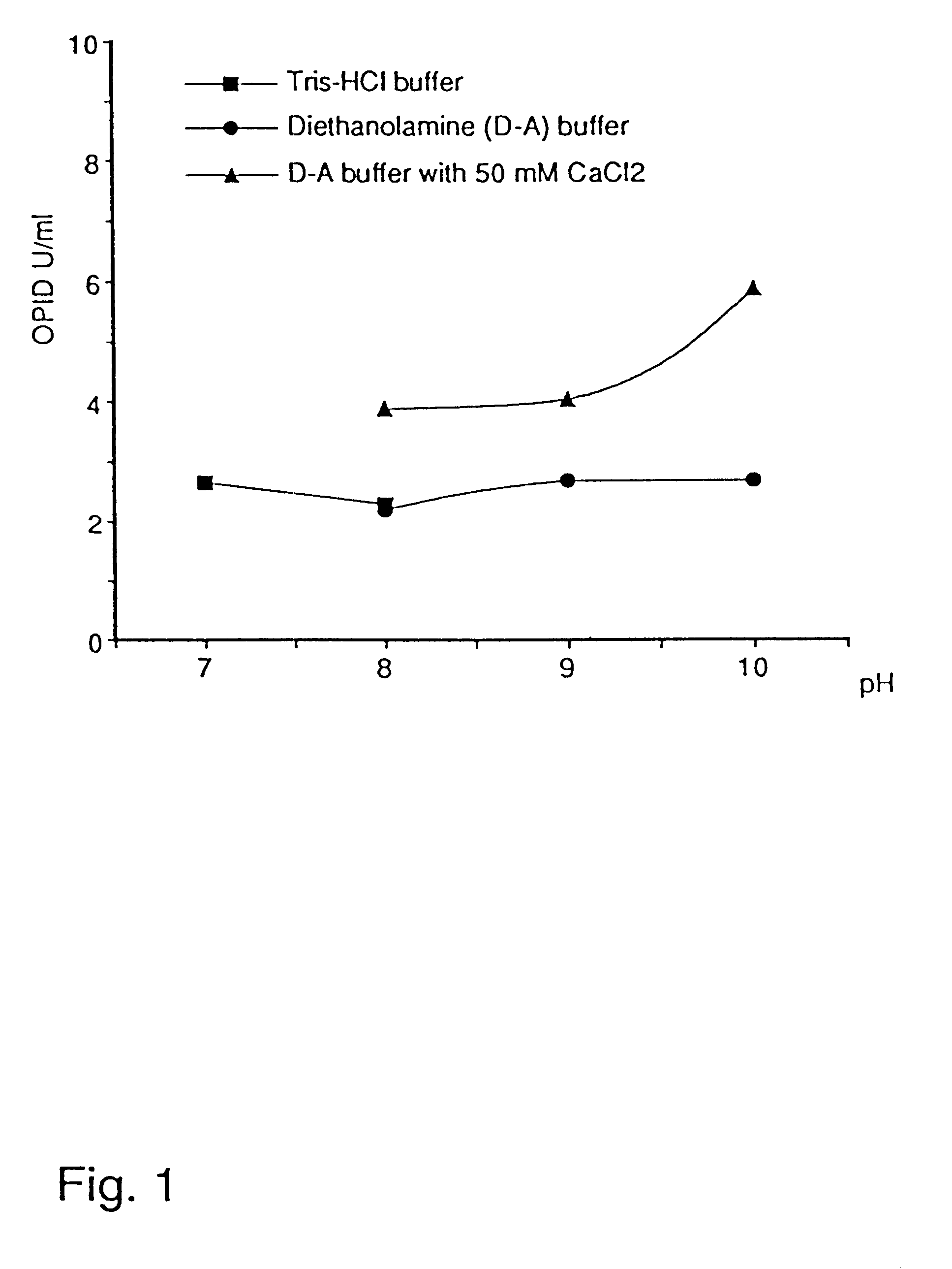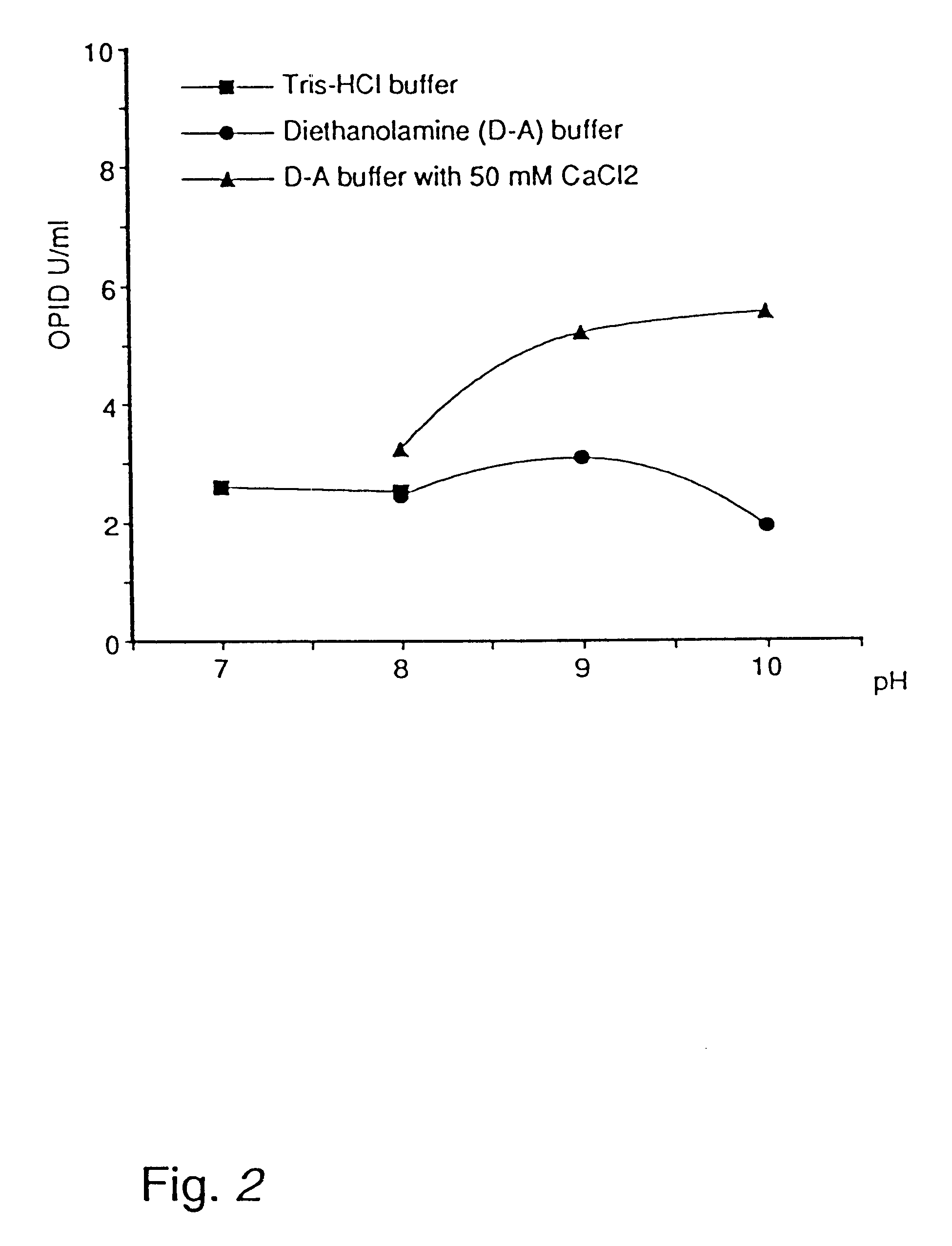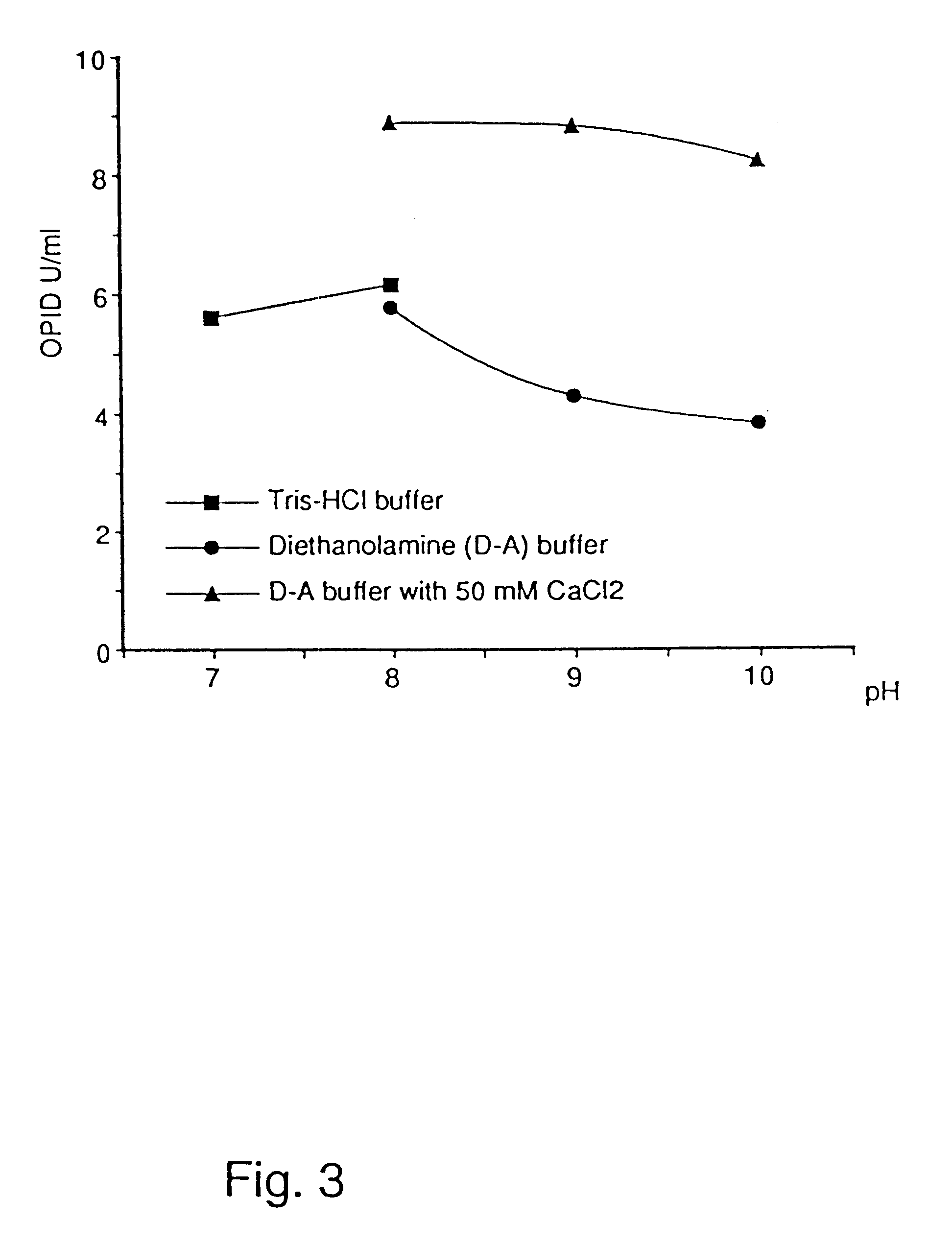Alkaline lipolytic enzyme
a lipolytic enzyme and alkaline ph technology, applied in the direction of transferases, detergent compounding agents, peptides, etc., can solve the problem that verticillium strains do not describe the production of lipolytic activity at alkaline ph, and achieve good washing performance and stability, and improve the effect of detergents
- Summary
- Abstract
- Description
- Claims
- Application Information
AI Technical Summary
Benefits of technology
Problems solved by technology
Method used
Image
Examples
example 1
Lipase Production from Strains of Gliocladium and Trichophaea
Each of the Gliocladium strains shown in the table below was used for lipolytic enzyme production by a seed culture followed by a main culture. The seed culture was made by cultivation on YS-2 medium for 2 days at 27.degree. C., and the main culture was made at 27.degree. C. using the medium and culture time shown below. At the end of the main culture, the cells were removed and the yield of lipolytic activity was measured using the LU and SLU assay methods.
All the above strains were seen to produce lipolytic enzyme. A particularly high yield was found by cultivation of G. solani.
example 2
Activity of Lipolytic Enzymes from Gliocladium and Trichophaea at Various pH
The cell-free culture broths from Example 1 were tested for lipolytic enzyme activity at pH 6.0, 8.5 and 10.0 without the addition of Ca.sup.++ and at pH 10 with addition of Ca.sup.++. The plate test described in Example 11 of WO 88 / 02775 (corresponding to JP-W 1-501120) was used.
It is seen that in this semi-quantitative test, all the above lipase preparations show nearly the same activity in the range pH 6-10, with and without calcium addition.
example 3
Production of Lipolytic Enzyme from Gliocladium sp.
A seed culture was prepared by inoculating Gliocladium sp. CBS 173.96 from a slant of PDA (product of Difco) to one shake flask with shaking for 2 days at 27.degree. C. A main culture was prepared by using the seed culture to inoculate 50 shake flasks with 100 ml of NOMO 16 for 5 days at 27.degree. C. with shaking.
3,000 ml of cell-free broth with a lipase activity of 11 LU / ml was recovered after removal of the cell mass, that was directly employed for the purification.
PUM
| Property | Measurement | Unit |
|---|---|---|
| Fraction | aaaaa | aaaaa |
| Angle | aaaaa | aaaaa |
| Angle | aaaaa | aaaaa |
Abstract
Description
Claims
Application Information
 Login to View More
Login to View More - R&D
- Intellectual Property
- Life Sciences
- Materials
- Tech Scout
- Unparalleled Data Quality
- Higher Quality Content
- 60% Fewer Hallucinations
Browse by: Latest US Patents, China's latest patents, Technical Efficacy Thesaurus, Application Domain, Technology Topic, Popular Technical Reports.
© 2025 PatSnap. All rights reserved.Legal|Privacy policy|Modern Slavery Act Transparency Statement|Sitemap|About US| Contact US: help@patsnap.com



